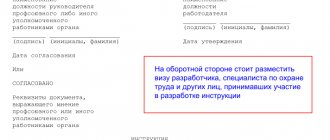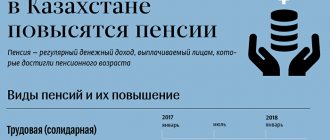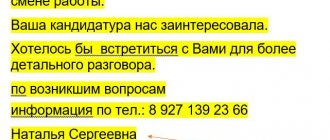The Ministry of Labor continues to regulate the labor functions of workers, including those employed in pharmaceutical activities. Chapter 31 of the Labor Code of the Russian Federation provides for the need to develop professional standards, which are understood as characteristics of the qualifications necessary for an employee to carry out a certain type of professional activity, including the performance of a certain job function.
Previously, we talked about the “Pharmacist” professional standard, which was the first to be released for pharmacists[1]. Now, in addition to it, professional standards “Pharmacist-analyst” and “Specialist in the field of pharmaceutical activity management” have appeared (orders of the Ministry of Labor of Russia dated May 22, 2017 No. 427n and 428n, respectively).
At the beginning, it is necessary to recall that according to Art. 195.3 of the Labor Code of the Russian Federation, a professional standard may be mandatory for application if the labor legislation of the Russian Federation establishes requirements for the qualifications necessary for an employee to perform a certain job function.
When applying this norm, other regulatory legal acts mean decrees and orders of the Government of the Russian Federation, orders of federal executive authorities, which specifically establish requirements for employees performing certain labor duties that are of a regulatory legal nature. In this case, in terms of requirements, these regulatory legal acts are applied (Letter of the Ministry of Labor of Russia dated December 26, 2016 No. 15-2/OOG-4698).
In particular, on the basis of Art. 57 of the Labor Code of the Russian Federation, the names of positions, professions, specialties and qualification requirements for them must correspond to the names and requirements specified in qualification reference books or professional standards, if, in accordance with the Labor Code of the Russian Federation or other federal laws, the provision of compensation and benefits or the presence of restrictions.
General information
Let's start with what the Professional Standard “Pharmacist” (hereinafter referred to as “PS”) is. It consists of three sections. In Section I - General Information:
- name of the type of professional activity - organization and conduct of pharmaceutical activities in the field of circulation of medicines;
- The goal of the activity is to provide the population, medical and other organizations with safe, effective and high-quality medicines
(hereinafter referred to as drugs) and other pharmaceutical products (hereinafter referred to as TAA).
Section II - Description of the labor functions of a pharmacist. Let's list them:
- wholesale and retail trade, distribution of drugs and other TAA;
- carrying out acceptance control of medicines and other TAA entering the organization;
- ensuring storage of medicines and other TAA;
- informing the population and medical workers about drugs and other TAAs;
- manufacturing of drugs in pharmacy organizations (this point applies only to pharmacies with a prescription and production department).
Master Class
In Section III you can find the possible names of pharmacist positions proposed by the standard - “pharmacist” and “pharmacist-technologist”, that is, there are no changes in this. Of course, it is mandatory to have a higher pharmaceutical education ( specialty level, that is, a classic 5-year higher education
) and advanced training at least once every 5 years throughout their career.
Below in the PS is a list of additional - that is, not mandatory, but highly desirable - ways of professional development of a pharmacist: retraining programs, internships, trainings, distance educational technologies (including webinars), participation in conferences, congresses, master classes. As they say, who would refuse. Any first-time patient will be happy to exchange the daily routine of pharmacy for a master class, internship or conference, at least for a few days or hours, and with the prospect of professional growth. But for this, as the main character of the film “Station for Two” said, he must “be sent at least once” to such events.
A special condition for admission to pharmacist work is passing
mandatory preliminary (upon employment) and periodic medical examinations (examinations), as well as, if necessary, extraordinary medical examinations.
I. General provisions
1. A person with a higher education – a specialty (“Pharmacy”) is appointed to the position of pharmacist. For professional growth and assignment of a qualification category (second, first and highest), the fulfillment of criteria corresponding to the specialty is required.
Main ways to improve qualifications:
— advanced training programs;
— professional retraining programs;
— internships;
— trainings in simulation centers;
— use of modern distance educational technologies (educational portal and webinars);
— participation in congresses, conferences, master classes.
2. There are no work experience requirements.
3. Additional requirements for permission to work:
— passing mandatory preliminary (upon employment) and periodic medical examinations (examinations), as well as extraordinary medical examinations (examinations) in the manner established by the legislation of the Russian Federation.
4. Appointment to the position of pharmacist, as well as dismissal from it, is made by order of the head of the organization.
5. The pharmacist must know:
5.1. Provisions of regulatory legal acts governing the circulation of medicines and pharmaceutical products, including issuing prescriptions/requirements, dispensing medicines, medical devices and their storage
5.2. Modern assortment of medicines and pharmaceutical products for various pharmacological groups, their characteristics, medical indications and method of use, contraindications, side effects, synonyms and analogues
5.3. Requirements for the quality of medicines, for the labeling of medicines and for documents confirming the quality of medicines and other pharmaceutical products
5.4. Requirements for maintaining subject-quantitative records of medicinal products
5.5. Requirements for maintaining reporting documentation in pharmaceutical organizations, professional office work
5.6. Information and communication technologies and computerized systems used in the dispensing of medicines and pharmaceutical products, modern methods of searching and evaluating pharmaceutical information
5.7. Modern methods and approaches to ensuring the quality of pharmaceutical care
5.8. Technologies of medicinal products and basics of biopharmacy
5.9. Pricing rules and prices for medicines and pharmacy products
5.10. Fundamentals of pharmaceutical management, business communication and culture, professional psychology and ethics, pharmaceutical deontology
5.11. Merchandising in pharmacy organizations
5.12. Labor protection requirements, fire safety, emergency procedures
5.13. Sanitary and epidemiological requirements for the organization of wholesale and retail trade in medicines and pharmaceutical products
5.14. Pharmaceutical Marketing
5.15. The procedure for purchasing and receiving goods from suppliers, accounting and inventory established in the organization, including the preparation of relevant documentation
5.16. Methods of analysis used in quality control of medicines and described in the State Pharmacopoeia
5.17. Recommended methods for identifying counterfeit and counterfeit medicines and other pharmaceutical products
5.18. The procedure for transporting thermolabile drugs through the “cold chain” and the means used to control temperature compliance
5.19. Modern methods and approaches to ensuring the quality of pharmaceutical care
5.20. The procedure for purchasing and receiving goods from suppliers established in the organization
5.21. Rules for the storage of medicines, rules for the destruction of falsified and counterfeit medicines, the procedure for calculating natural loss when storing medicines
5.22. Basics of responsible self-medication
5.23. Principles of pharmacotherapy taking into account the pharmacokinetics and pharmacodynamics of drugs
5.24. Fundamentals of Clinical Pharmacology
5.25. Rules for the rational use and dispensing of drugs
5.26. Regulatory legal acts on the manufacture of dosage forms and intrapharmacy control
5.27. Rules for the manufacture of solid, liquid, soft, sterile and aseptic dosage forms
5.28. Physico-chemical and organoleptic properties of drugs, their physical, chemical and pharmacological compatibility
5.29. Fundamentals of Microbiology
5.30. Nomenclature of modern medicinal substances and excipients, their properties, purpose
5.31. Rules for the use of personal protective equipment
5.32. _____________________________________________________________________
6. The pharmacist reports directly to __________________________.
7. During the absence of a pharmacist (vacation, illness, etc.), his duties are performed by a person appointed in the prescribed manner. This person acquires the corresponding rights and is responsible for their proper execution.
8. The pharmacist must comply with moral and ethical standards within the framework of his professional activities.
9. ________________________________________________________________
Pharmacy, or Our Second Lieutenant Kizhe
In one of the parts of Section III, attention is drawn to the name of our specialty according to the All-Russian Classifier of Specialties in Education (OKSO) - “pharmacy”. That's right, with an "e".
This is not a mistake of the developers at all, explains Elena Nevolina
, executive director of the responsible organization that developed the standard: “Our specialty is called “pharmacy”.
A mistake was made in OKSO. This classifier is maintained by the Ministry of Education and Science. While working on the standard, we wrote to the Ministry of Education and Science with a request to correct the error. It turned out that this was an incident of the compiler of the classifier, who apparently decided that since “pharmacists”, then the specialty should be written with “e” - “pharmacists”. The problem is that until OKSO is reissued, this error in the current classifier cannot be corrected.” Elena Nevolina further says that at first the developers, of course, indicated the correct name of the specialty “pharmacy” in the standard, but the Ministry of Justice returned the PS back precisely on the grounds that it did not coincide with the name specified in OKSO.
Here's a joke. Someone, probably without a pharmaceutical education, made a mistake in one classifier, and “the entire industry army” is unable to correct this mistake. And now she is walking around in regulatory legal acts, confusing professionals. There is such a common phrase “letter of the law”. In this case, literally one letter - like that same second lieutenant Kizhe, born from the pen of an official - staged a cheerful concert over common sense.
Standard is required
Section III for each of the above labor functions of a pharmacist lists: a) labor actions, b) necessary skills, c) necessary knowledge, d) other characteristics. But before moving on to them, let’s find out whether the PS “Provisor” is mandatory or, for example, desirable (recommendatory) in nature.
The Ministry of Labor of the Russian Federation in letter No. 14–0/10/13–2253 dated 04/04/2016 explains that the requirements for the qualifications of workers contained in professional standards are mandatory for the employer in cases where they are established by the Labor Code and other federal laws of the Russian Federation. In this regard, Elena Nevolina
Regarding the topic of applying the standard in real pharmacy everyday life, Elena Nevolina
o will be the basis for the employer when drawing up a job description and an employment contract with an employee, which spells out his job functions. It is possible that now the following wording will appear in employment contracts en masse, describing the employee’s responsibilities: “...to perform labor actions, to have the necessary skills and knowledge in accordance with the professional standard “Pharmacist”.
On the other hand, the PS can also serve as a guideline for the pharmacist entering into a contract. For example, the latter may refuse those functions that are not included in the standard, or agree to perform them under special conditions.
Non-compliance with the requirements of the PS “Provizor” falls under Part 1 of Article 5.27 of the Code of Administrative Offenses of the Russian Federation “Violation of labor legislation and other regulations containing labor law norms.” It provides for the following administrative fines: for individual entrepreneurs and officials - from 1000 rubles. up to 5,000 rubles, for legal entities - from 30,000 rubles. up to 50,000 rub. Note that fines are not imposed on the employee, but on the one for whom he works.
IV. Responsibility
The pharmacist is responsible:
1. For improper performance or failure to fulfill one’s job duties provided for in this job description - within the limits determined by the current labor legislation of the Russian Federation.
2. For offenses committed in the course of carrying out their activities - within the limits determined by the current administrative, criminal and civil legislation of the Russian Federation.
3. For causing material damage - within the limits determined by the current labor and civil legislation of the Russian Federation.
4. ____________________________________________________________________
This job description has been developed in accordance with the provisions (requirements) of the Labor Code of the Russian Federation dated December 30, 2001 No. 197 FZ (Labor Code of the Russian Federation) (with amendments and additions), the professional standard “Pharmacist” approved by order of the Ministry of Labor and Social Protection of the Russian Federation from March 9, 2020 No. 91n and other legal acts regulating labor relations.
Consulting: badge and shield of the profession
It is no secret to industry professionals that our profession is subject to certain pressure from those who want to sell medicines - even over-the-counter ones - without being a pharmaceutical organization, that is, without a license, diploma, etc. What distinguishes a banal sale from a professional sale medications? The answer is obvious - first of all, counseling on issues related to the choice and use of medications.
The PS “Provizor” pays close attention to this topic. In particular, among the labor actions within the framework of the function “retail trade, distribution of medicines and other TAA” are:
- provide advice on drug groups and synonyms within one INN and their prices;
- dispense medications according to prescriptions and without a doctor’s prescription, with consultation on the method of use, contraindications, side effects, interactions with food, other medications and TAAs.
Elena Nevolina
reminds that the prerogative to sell medicines exclusively in pharmacies, established by Peter I, has been preserved to this day precisely because the dispensing of medicines requires competent consultation.
“We have practically lost this function,” regrets the executive director of the Pharmacy Guild , “so those who call for permission to sell medicines in supermarkets trump the argument that pharmacies rarely give advice these days.”
“So we want the consulting function to become mandatory again,” summarizes Elena Nevolina . Thus, by emphasizing in the PS “Provisor”, pharmaceutical consulting becomes a sign of the profession, as well as its shield that protects non-professionals from entering the medicinal industry
. After all, if consultation is mandatory, then the sale of drugs in supermarkets without licensing the facility will become impossible.
Other actions and skills
All labor actions, skills and knowledge included in the PS cannot be listed within the scope of the article. We will mention only those of them that are also included in the “retail trade...” function mentioned above:
- carry out a pharmaceutical examination of recipes and requirements, checking the design of their prescription, method of administration, drug safety in relation to the dosage form, dosage, interactions with other drugs specified in the prescription;
- tax prescriptions and requirements, register them;
- exercise control during dispensing, in particular, the integrity of the packaging, correct labeling, compliance of the name with the recipe, dosage (including potent and other drugs), etc.
- make decisions on replacing prescribed drugs with synonyms and similar drugs in the prescribed manner;
- carry out pre-sale preparation, organization and display of medicines and other TAA in the sales area and on display cases;
- be able to maintain cash, reporting, organizational and administrative documentation;
- study demand; etc.
The “necessary skills” of a pharmacist basically repeat the labor actions listed above with some additions. For example, a pharmacist should also be able to:
- interpret the provisions of legislative and other regulatory legal acts governing the circulation of medicines and other TAAs;
- use computer systems adopted in pharmacy organizations;
- carry out effective communications with colleagues and patients when solving professional problems.
Here we are talking, for example, about interaction with doctors in the event of identifying any problems related to the contents of the prescription and the prescribed drugs; - keep substantive and quantitative records of medicines; etc.
III. Rights
The pharmacist has the right:
1. Request and receive the necessary information, as well as materials and documents related to issues of their activities.
2. Improve your qualifications, undergo retraining (retraining)
3. Take part in the discussion of issues included in his functional responsibilities.
4. Make suggestions and comments on how to improve activities in the assigned area of work.
5. Require the management of the organization to provide assistance, including ensuring organizational and technical conditions and execution of the established documents necessary for the performance of official duties.
6. Make independent decisions, guided by qualification requirements and job responsibilities
7.___________________________________________________________
Bridge between university and work
The only thing left to do is “small” - how can a pharmacist obtain all these listed skills and knowledge, most of which are practical in nature? When searching for an answer to this question, it turns out that the appearance of the PS “Provizor” was prepared by previous changes in the system of higher pharmaceutical education.
Elena Nevolina recalls that graduates of 2020 have already studied according to the Federal State Educational Standard (FSES), which places special emphasis on practical skills
. This is why educational pharmacies are opened in our pharmaceutical universities - such as, for example, at the Faculty of Pharmacy of the First Moscow State Medical University. This is the bridge between educational and professional standards, between training and practice “focused” on practical skills.
And in the middle of this bridge is the accreditation procedure for pharmacists and pharmacists
, which is also being introduced this year. What does it mean for a graduate of a pharmaceutical university to successfully complete accreditation? The fact that he is ready to competently perform the labor actions prescribed in the standard and also has the necessary knowledge and skills specified in the same PS.
A bridge called “educational standard with an emphasis on practical skills - specialist accreditation - professional standard”
, seems to be built sequentially, logically and interconnectedly. Now the question is how it will work.
Introduction of professional standards into the activities of employers
When using professional standards, it is recommended to follow the following procedure:
- Create regulations documenting the procedure and those responsible for their proper implementation.
- Conduct an analysis of the functioning of the company and its employees. It is necessary to determine the degree of load, industry characteristics, etc.
- Select the necessary professional standards and make changes to the labor documentation based on them.
- Based on new documents, develop criteria for assessing both current employees and candidates for employment.
- Conduct recertification of existing employees and require them to improve the quality of their activities.
- Make the necessary changes to the organizational structure: introduce new positions, change the workload, etc.
After these operations, the company’s management will be able to send employees for retraining, refuse candidates who do not meet the new criteria, and also correctly transfer specialists to other positions. For example, if a pharmacist does not meet the qualification criteria of the professional standard, then Art. 72.1 of the Labor Code, transferring him to a less responsible position.
Attention! If a pharmacist does not meet the parameters of the professional standard, the Labor Code does not provide the possibility of his dismissal. This cannot be done even if he does not want to undergo additional training.
Master Pharmacist and Bachelor Pharmacist
What about the standard for pharmacists? According to Elena Nevolina
, it has actually already been done and has even undergone public discussion.
Its developer was the National Pharmaceutical Chamber .
Pharmacists, unlike pharmacists, will switch to the accreditation procedure in 2018; The adoption of the Professional Standard “Pharmacist” will most likely happen before this event - perhaps at the beginning of 2020. Let’s wait and see how the PS “Pharmacist” and the PS “Pharmacist” will differ. Indeed, in practice, the functions of primary pharmacists and primary pharmacists are now almost the same. The same can be said about their salaries.
One can express the hope that changes in the industry, on the one hand, will eliminate this leveling, and on the other, will raise the prestige of Russian pharmaceutical education as a whole, regardless of the level. Professional practice increasingly indicates that it is worth considering the transition from a specialty (5 years) to a two-level system: bachelor (4 years, pharmacist) - master (another two years, pharmacist). Otherwise, it is difficult for both to meet the standards and requirements that are placed on them.
So, now one document clearly states what a pharmacist should be able to do, so to speak, the “ideal of a pharmacist” is described. The rest is beyond the scope of its functions. But let's see if ideals can appear through orders alone.
Drawing up a job description
The most common typical job description contains 4 parts:
- Common parameters.
- Responsibilities.
- Possible liability.
- Labor rights.
In large companies, as well as when creating instructions for top managers, an extended document format can be used. Added to the above sections:
- Features of the work.
- Performance measurement parameters (KPIs).
- Parameters of job interactions.
The extended format of the instructions is used in cases where the employer wants to more clearly define some individual parameters of work activity.
General provisions
This initial section contains the following general aspects of the employee's performance:
- Parameters of his personnel movements.
- The provisions he should be guided by.
- Professional requirements that he must meet.
- The skills and abilities expected from him.
The requirements for his professional level are of primary importance. They must ensure that the candidate is qualified to perform the job functions given in the next part.
Attention! In describing the characteristics of a pharmacist, the corresponding professional standard 02.006, approved by the Ministry of Labor on 03/09/2016, can be used. Professional standards are not mandatory for use in the business sector and their use is advisory in nature, prescribed in articles 195.1-195.3 of the Labor Code.
Functions
The support functions described here may vary from organization to organization. Thus, in some pharmacies, the pharmacist displays goods in accordance with merchandising rules and conducts cash transactions. In large medical institutions, these duties are performed by specialized personnel, and the pharmacist focuses on working with medicines: checking their quality and parameters, working with the attached documentation, etc.
Responsibility
This section includes 3-4 points about possible liability for violations. Establishing a penalty for an employee is impossible without administrative and legal proceedings, which are detailed in the relevant sections of the law. However, their description is very voluminous and goes beyond the scope of the instructions. Therefore, the paragraphs are given in general form, with minimal specifics.
Rights
The employee's capabilities listed in this section depend on the range of tasks he solves. The more responsible these tasks are, and the more of them, the more extensive the list of labor rights provided by the employer. It should also be noted that the rights specified here should not duplicate those already guaranteed to the employee in Art. 21 TK.
After drawing up the initial version of the job description, it must be consistent with:
- lawyer;
- HR employee;
- the employee's immediate supervisor;
- specialized deputy head of the employing organization.
After making the appropriate adjustments, the document is sent for signature to the head of the organization. Signatures are also placed by the responsible persons who participated in the approval of the contents of the instructions. The employee himself signs the document during employment, agreeing with its contents.
Attention! The final version of the instructions must be drawn up taking into account the rules of office work: decoding of signatures, date of writing, presence of organization details and other attributes.










